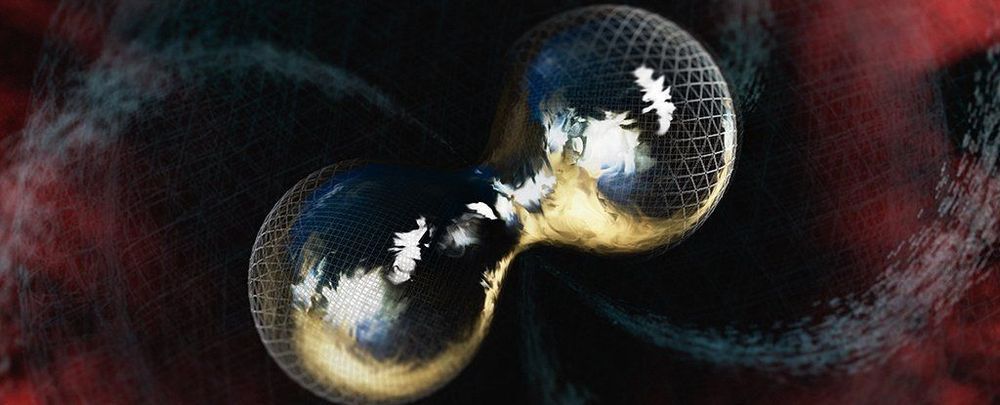We’ve got lots of FREE eBooks and apps ready for you to download! Add some space to your life:
EBooks: https://go.nasa.gov/2EFZ2or Apps: https://go.nasa.gov/2EHwjj4

We’ve got lots of FREE eBooks and apps ready for you to download! Add some space to your life:
EBooks: https://go.nasa.gov/2EFZ2or Apps: https://go.nasa.gov/2EHwjj4

‘’As a result, it’s nonsensical to ask what happens to space-time beyond the Cauchy horizon because space-time, as it’s regarded within the theory of general relativity, no longer exists. “This gives one a way out of this philosophical conundrum,” said Dafermos.
Mathematicians have disproved the strong cosmic censorship conjecture. Their work answers one of the most important questions in the study of general relativity and changes the way we think about space-time.

Scientists have created a rubbery, shape-shifting material that morphs from one sophisticated form to another on demand.
The shapes programmed into a polymer appear in ambient conditions and melt away when under heat. The process also works in reverse.
The smooth operation belies a battle at the nanoscale, where liquid crystals and the elastomer in which they’re embedded fight for control. When cool, the shape programmed into the liquid crystals dominates, but when heated, the crystals relax within the rubber band-like elastomer, like ice melting into water.

We present to you a cosmic winter wonderland. Enjoy: https://go.nasa.gov/2EHC29J

Water scarcity is a global security risk. Researchers are developing ways to forecast risks to prevent conflicts.
A plant grows between cracked mud at the Theewaterskloof dam near Cape Town, South Africa, on Jan. 21, 2018. The dam, which supplies most of Cape Town’s potable water, is currently dangerously low as the city faces “Day Zero”, the point at which taps will be shut down across the city. Mike Hutchings / Reuters file.

Ghrelin, the hormone that makes you hungry, also makes food, and food smells, irresistibly appealing. Karen Hopkin reports.
‘Tis the season…for overeating! But it’s not just your lack of willpower or the omnipresent holiday treats. No, you can lay some of the blame on ghrelin. Because a new study shows that ghrelin, the hormone that makes you hungry, also makes food…and food smells…irresistibly appealing. The finding appears in the journal Cell Reports. [Jung Eun Han et al, Ghrelin Enhances Food Odor Conditioning in Healthy Humans: An fMRI Study].

According to a straightforward interpretation of general relativity, the Big Bang wasn’t the start of ‘everything’.
Taking Einstein’s famous equations at face value and making as few assumptions as possible, a team of researchers has rewound the clock on our Universe to find it wouldn’t lead to a stopping point at all, but would take us through a different kind of beginning into a flipped space.
To understand what all the fuss over the Big Bang is, we need to rewind a bit to understand why physicists think it may not have been the start of everything.

The government should consider giving out monthly Social Security checks—no strings attached.